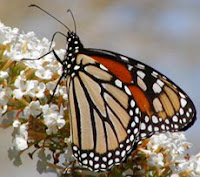 |
| Cary Institute, Millbrook, NY |
 |
| Their guide helps you identify local butterflies. |
They offer naturalists—and future naturalists—access to their extensive acreage through use of their hiking trails. Because they are dedicated to “the dissemination and application of knowledge about ecological systems”, they supply scientific information on site and online so visitors can learn about the local environment while enjoying the natural beauty. Their butterfly guides, bird checklist, and field notes will help prepare you for your visit.
Their summer ecology camp's theme this year is “Wetland Watchdogs: Studying swamps, marshes, vernal pools and ponds”. What child would not love to spend a summer week searching for critters in the water?
 |
| Map of hiking trails |
Throughout the year they organize free public events on environmental issues. This spring they have scheduled well known experts to present important current issues. Here are some excerpts from their website's events page:
- Bill McKibben: The Building Movement to Tackle Climate Change (Thursday, April 28, 2:30 p.m.) He will discuss how people around the world - many in the poorest parts of the planet - are working to address global warming. He will also talk about how people close to home can play part in the political and practical work necessary to make a real difference.
- The Singing Life of Birds (Friday, May 6th, 7:00 p.m.) Bird song expert Donald Kroodsma will describe how birds communicate and why. Listen to the sounds of birds as you’ve never listened before, using their songs as a window into their minds.
- The Last Mountain (Friday, May 13th, 7:00 p.m.) Join us for an advanced screening of this documentary film exploring how mountaintop coal mining impacts the environment and human health.
- The Environmental Footprint of Marcellus Shale Gas (Friday, June 10th, 7:00 p.m.) Will gas extraction in the Marcellus Shale be a boon, providing cleaner domestic energy, or a bust, contaminating our air and water resources?














